This project explores how human motion in space may be sensed, interpreted, and recorded with physical computing. The project integrates digital sensing with spatial interaction. With three ultrasonic sensors, LEDs, a servo motor, and an OLED display, the system not only senses but also displays directional flow — i.e., whether people are coming or going from a space being monitored.
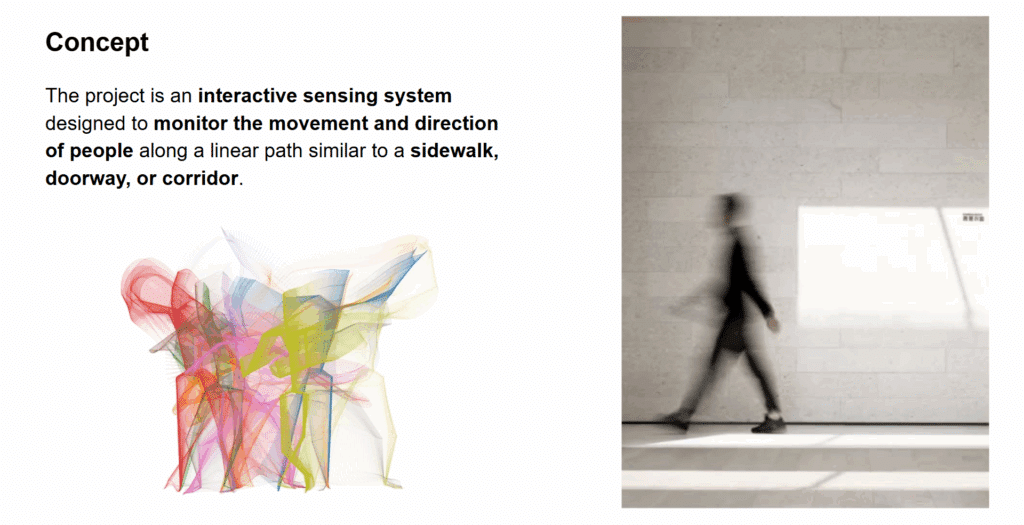
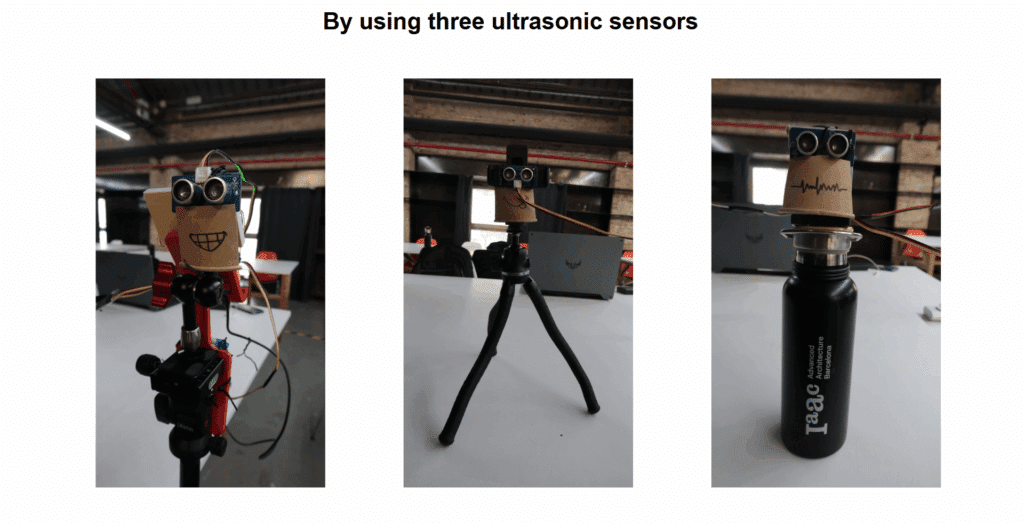
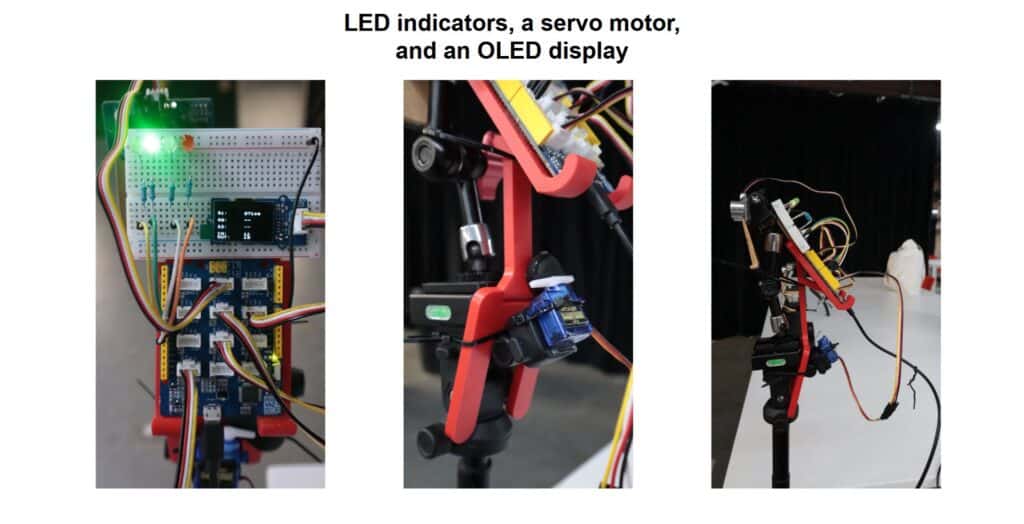
How it Works :
1. Detection Phase:
- The system continuously monitors distance readings from sensors A, B, and C.
- As a person moves, sensors detect proximity and trigger corresponding LEDs.
2. Direction Logic:
- If the sequence A → B → C occurs, the system interprets this as an Entry event.
- If the sequence C → B → A occurs, it’s an Exit event.
- Simple flags and delays are used to track direction and avoid false triggers.
3. Action Trigger:
- Upon detecting a complete movement in either direction, the servo motor rotates 45°, pressing the camera trigger.
- The OLED screen displays “ENTRY” or “EXIT” and updates a counter for each.
4. Feedback:
- LEDs light up dynamically with each sensor activation.
- The OLED gives clear visual confirmation of events.
- The servo click physically activates the camera, taking a photo of the passerby.
The prototype demonstrates how physical computing and programming can be used to create responsive, data-aware urban mapping systems.
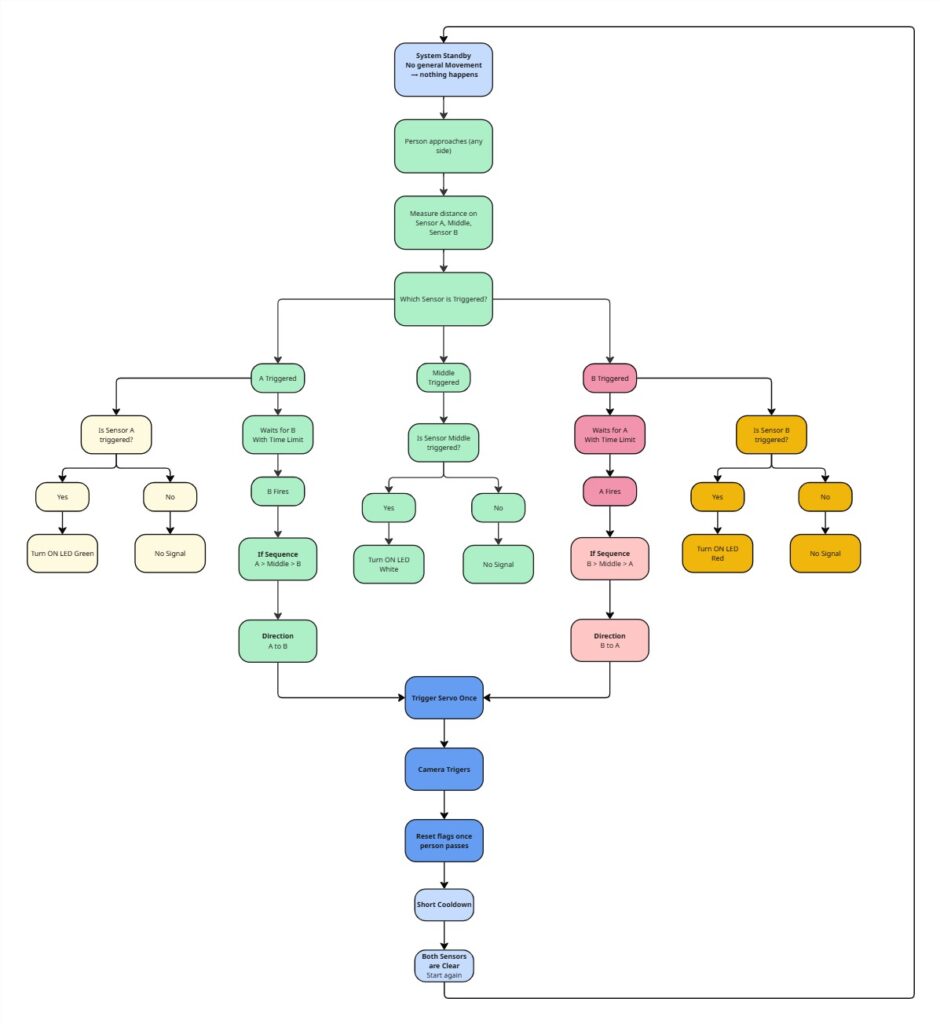
Bill of Materials
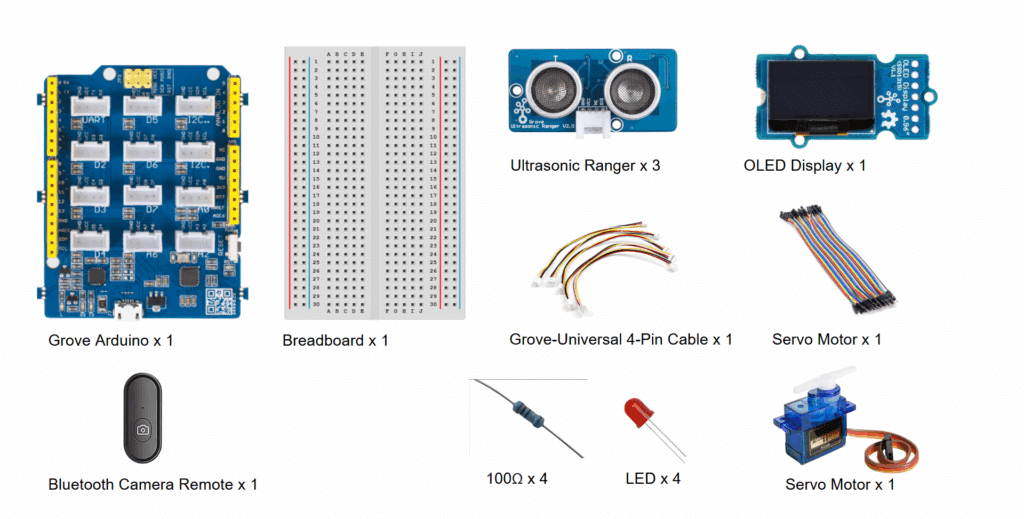
System Setup
Sensor A (Ultrasonic) → Positioned at the start (Entry point)
Sensor B (Ultrasonic) → Positioned midway to confirm movement direction
Sensor C (Ultrasonic) → Positioned at the end (Exit point)
Servo Motor → Mechanically linked to a camera trigger button
OLED Display → Shows live feedback (“Entry”, “Exit”, count values)
4 LEDs → Visually represent sensor activation in real time
System Circuit Layout
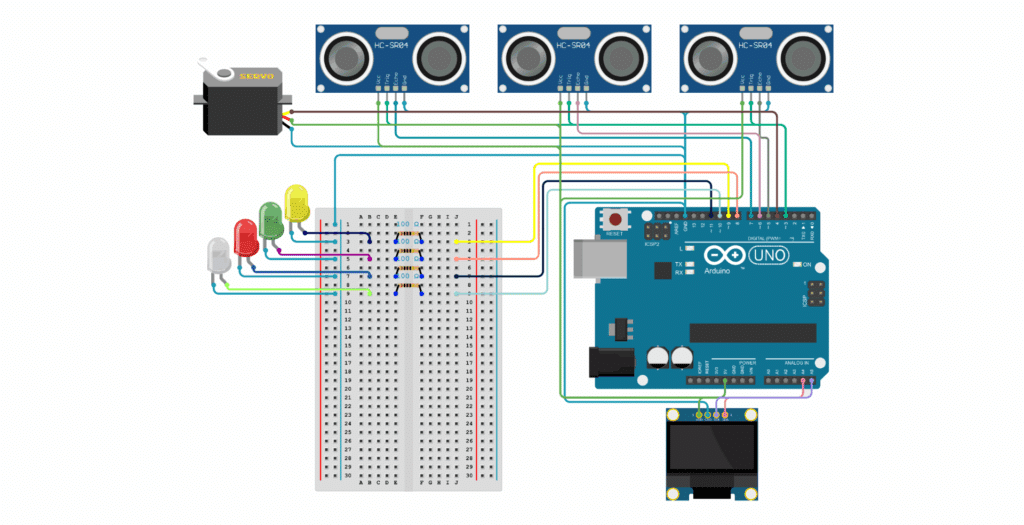
Arduino Sketch
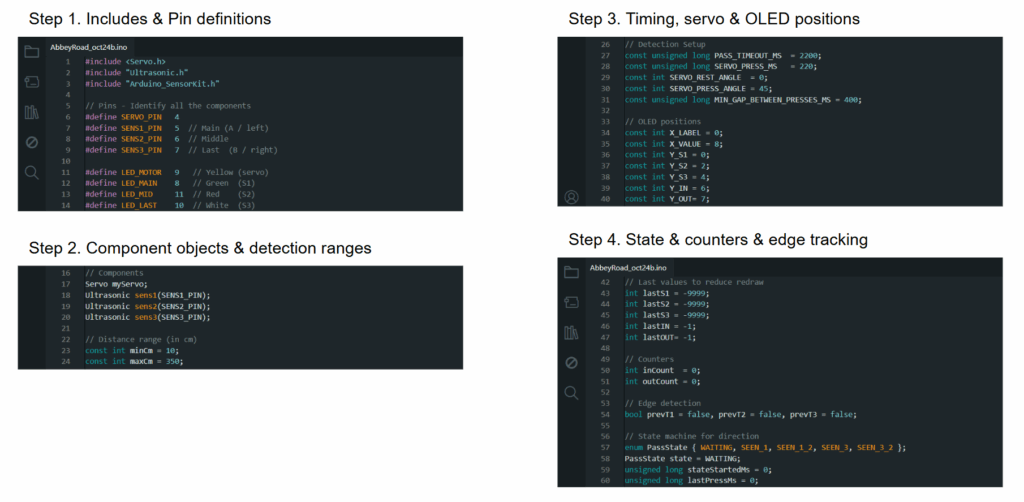
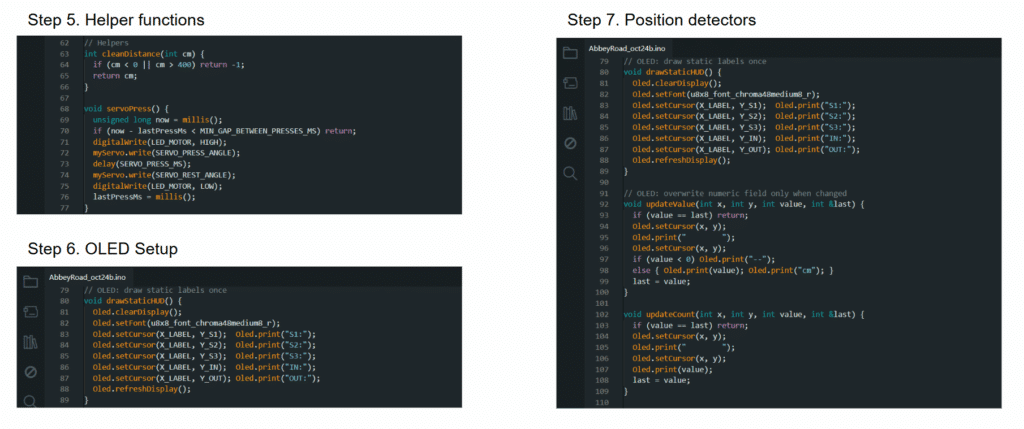
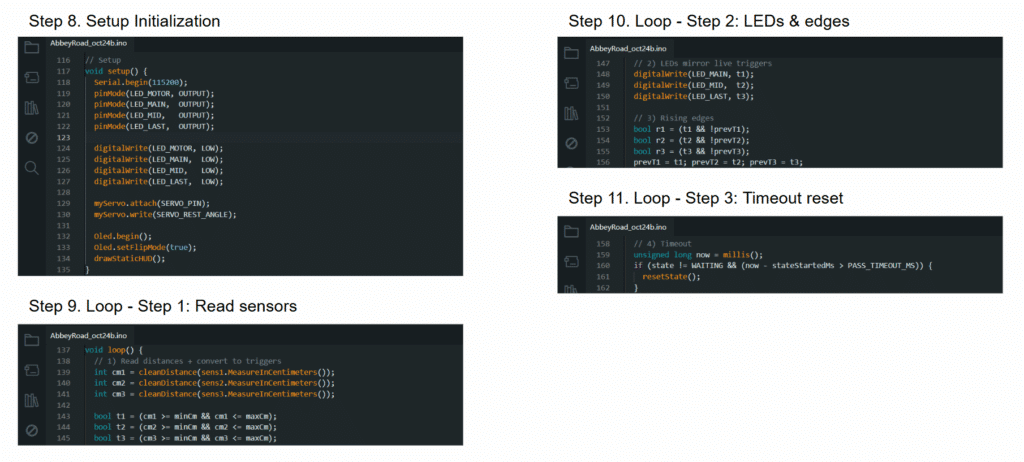
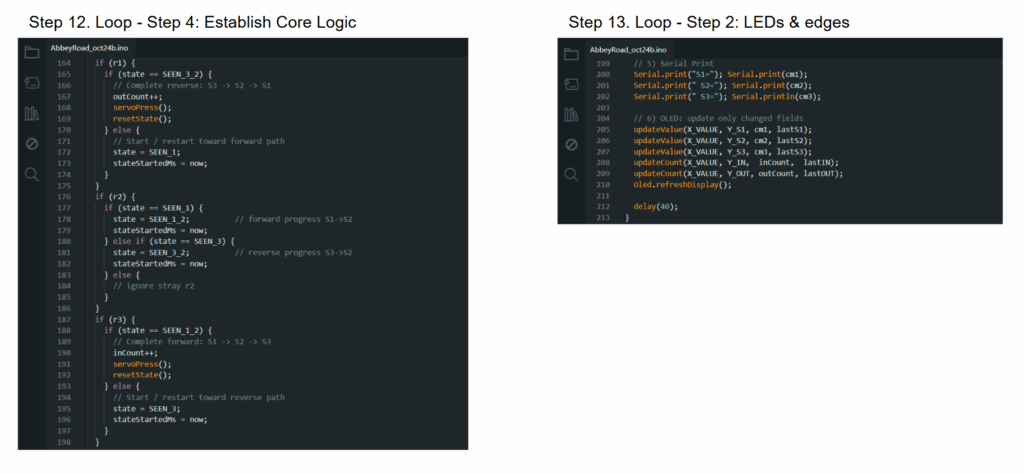
Next Steps
1. Wireless Camera Integration
- Replace the servo-button setup with Bluetooth or Wi-Fi triggering (e.g., ESP8266/ESP32).
- Enables faster and more reliable camera activation.
2. Data Logging and Analytics
- Store entry/exit counts with timestamps on an SD card or cloud.
- Analyze movement trends or daily traffic patterns over time.
3. Enhanced Sensing Accuracy
- Add PIR or infrared sensors to reduce false triggers.
- Use sensor fusion for smoother and more consistent detection.
Architectural and Spatial Applications
1. Implement in galleries, installations, or smart entry systems to monitor movement.
2. Extend toward responsive or kinetic architecture reacting to human activity.

